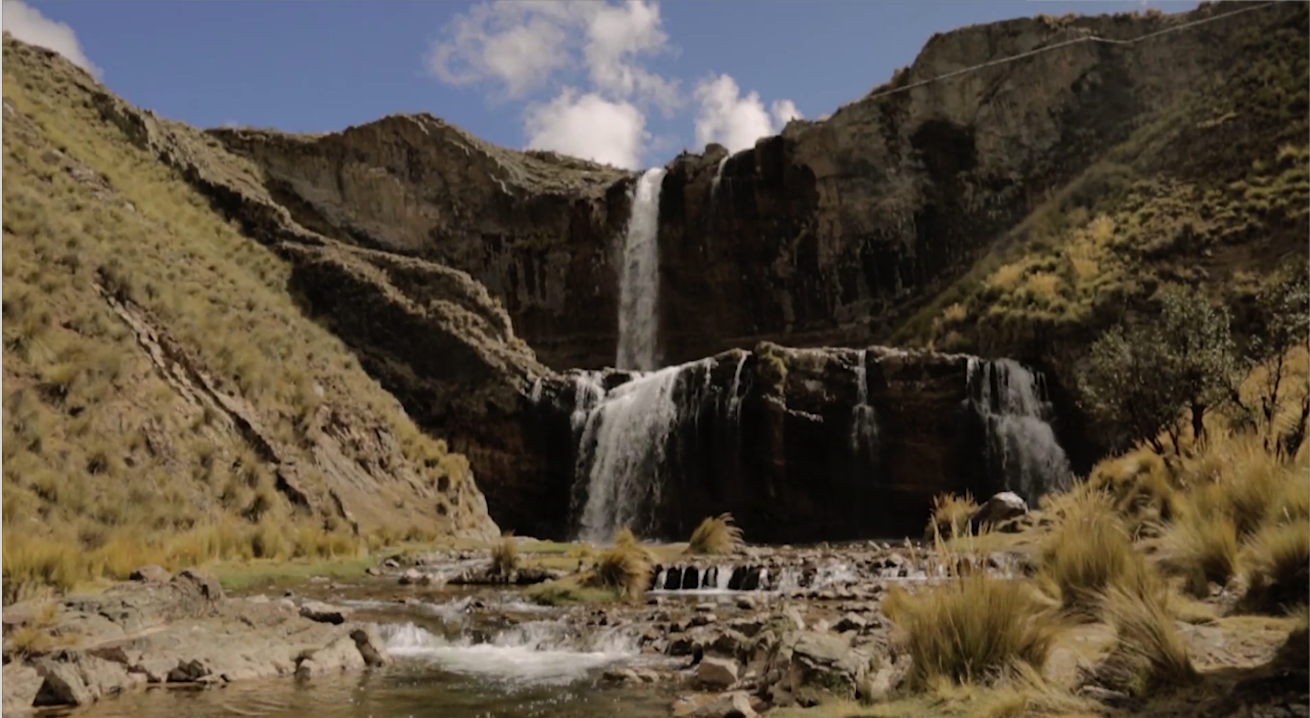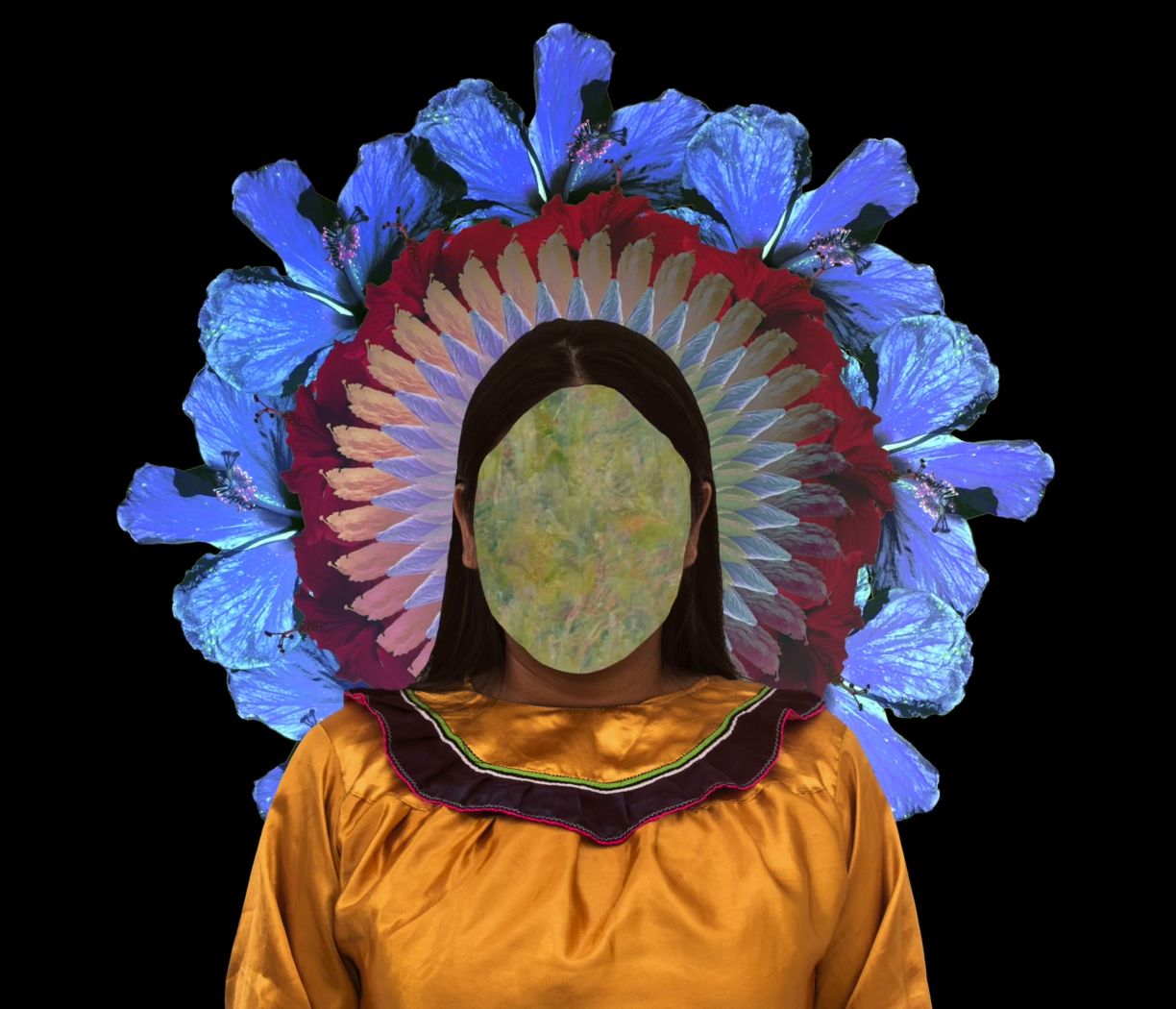River Voices. Sesión 1 | Recordatorio y renovación
¿Qué significa dar voz al río?
Únete a la Dra. Erin O’Donnell, especialista en derecho y política del agua, al periodista de investigación Joseph Zárate y a la Dra. Frederica Barclay, antropóloga y académica, para reflexionar y debatir sobre tres cortometrajes fundamentales. Desde diversas disciplinas y profesiones, los ponentes ofrecerán perspectivas únicas para entender y desentrañar la compleja cuestión: ¿Qué significa dar voz al río?
Mira la Sesión 1 | Recordatorio y renovación aquí
Las tres cortometrajes que se proyectarán durante la sesión transmitida en directo son:
 Feedback (2019) dirigida por Janine Soenens (Perú), 10 min 08 seg
Feedback (2019) dirigida por Janine Soenens (Perú), 10 min 08 seg
Los ríos proporcionan un suministro ininterrumpido de agua a la mayoría de las ciudades del mundo. El Rímac es el principal río de la capital de Perú, Lima, sin embargo, este se encuentra contaminado tanto por las minas de los Andes como por las aguas residuales de las zonas urbanas. Feedback (2019) presenta la acción de recoger un cubo de agua del punto más contaminado del río Rímac y devolverlo a su origen y fuente natural.

Visión de la Selva (1973) dirigida por el Grupo de Cine “Liberación sin Rodeos” (Perú), 17 min 50 seg
Visión de la Selva es una película militante realizada a principios de los años setenta por el colectivo cinematográfico LSR (Grupo de Cine Liberación sin Rodeos). Denuncia la explotación en la Amazonía peruana y las prácticas nocivas de varias empresas presentando el contexto y los problemas territoriales de este espacio social y geográfico. A principios de los años 70, se estaba trabajando en una propuesta de ley para reconocer los derechos específicos de los indígenas como ciudadanos. Antes de esta época, las leyes no reconocían el derecho de propiedad de los pueblos indígenas amazónicos.

Radio Belén (1983) dirigida por Gianfranco Annichini (Italia / Perú), 11 min
Radio Belén es un documental que retrata la vida en el mercado y el puerto de Belén en Iquitos, el corazón de la Amazonia peruana, a través de las voces de las emisiones diarias de Radio Belén, una popular emisora local. La transmisión de mensajes a los lugareños, desde anuncios de bodas y funerales hasta recomendaciones sanitarias, revelan las actividades económicas diarias de un territorio geográfico. El cineasta capta a los habitantes del puerto que se convierten en inesperados protagonistas de su propia vida.
Sesión moderada por Jorge Villacorta y José-Carlos Mariátegui de Alta Tecnología Andina – ATA.
Sobre los participantes

Erin O’Donnell es experta en derecho y política del agua, centrada en los mercados del agua, los caudales ambientales y la gobernanza del agua. Ha trabajado en la gestión del agua desde 2002, tanto en el sector privado como en el público. Erin es reconocida internacionalmente por su investigación en el nuevo campo de los derechos legales para los ríos, y los desafíos y oportunidades que estos nuevos derechos crean para proteger los múltiples valores sociales, culturales y naturales de los ríos. Su trabajo se basa en el análisis comparativo a través de Australia, Aotearoa Nueva Zelanda, Estados Unidos, India, Bangladesh, Chile y Colombia. En 2018, Erin fue nombrada miembro del Consejo Inaugural de Birrarung, la voz del río Yarra. De 2018 a 2021, en colaboración con los propietarios tradicionales de toda Victoria, Erin dirigió un proyecto para identificar las vías legales y políticas para aumentar el acceso al agua de los aborígenes.

Joseph Zárate es periodista y editor. Es autor de “Guerras del interior”, libro por el cual recibió el Premio Ortega y Gasset 2016 y el Premio Gabriel García Márquez de Periodismo 2018. Estas crónicas narran historias sobre la tala ilegal en la comunidad amazónica de Saweto, la presencia del proyecto minero Conga en los Andes de Cajamarca y el derrame de petróleo que contaminó la comunidad de Nazaret y el río donde el pueblo Awajún solía nadar y pescar. Estos escritos denuncian las guerras sociales, económicas, políticas y ambientales que se libran en el interior del Perú e iluminan las guerras personales, psicológicas y emocionales de los pueblos que por diferentes circunstancias, luchan, defienden y preservan sus tierras, costumbres e identidades. Zárate se pregunta: ¿Qué somos capaces de hacer -como individuos y como sociedad- en nombre de lo que llamamos “progreso”?

Frederica Barclay es antropóloga (MSc. en Antropología Social, London School of Economics and Political Science (LSE) y Doctora, Universidad de Barcelona, España) cuyas investigaciones y publicaciones se centran en los procesos históricos, sociales y económicos en la Amazonía y los territorios indígenas, así como en la situación de salud colectiva. Desde 2015 trabaja en el Centro de Políticas Públicas y Derechos Humanos – Perú Equidad, que actualmente preside. Frederica ha impartido clases en la Pontificia Universidad Católica del Perú, London School of Economics, la Universidad Nacional de San Marcos y la Facultad Latinoamericana de Ciencias Sociales (FLACSO), Ecuador.
Sobre el GIF

Mala Celeste es una artista visual multidisciplinar australiana, con experiencia en instalación, vídeo, fotografía, pintura y escultura. Su formación en Lingüística Aplicada en la Universidad de Monash la ha llevado a explorar ideas de comunicación, globalización e identidad cultural a través de su práctica artística, y le ha permitido pasar tiempo trabajando e investigando en el extranjero con base en Asia y América. Ha expuesto en Perú, Bolivia, España y Australia y actualmente vive y trabaja en la tierra de Boon Wurrung.
Sin título, 2021
Celeste hace un collage de fotografías y vídeos capturados durante sus viajes por Bolivia y Perú. Utiliza la fotografía aérea para documentar la rápida deforestación de la selva amazónica para el beneficio del capital privado. Fragmentos del paisaje han sido incrustados en una fotografía tomada por Celeste de un amigo, artista y maestro, del pueblo Shipibo-Konibo de la Rive de Ucayali. Su objetivo es dar voz a los sistemas hídricos amazónicos a través de la figura humana. Para Celeste, los seres humanos y el mundo natural son un sistema complejo y entretejido con límites artificiales intencionadamente borrosos. Las flores que enmarcan el rostro son hibiscos, un género floral amplio y diverso que ahora crece en todos los continentes excepto en la Antártida. Dispuestas en una aureola en forma de mandala, se inspiran en la herencia cultural de la artista y pretenden transmitir un sentimiento de esperanza de crecimiento y regeneración.
Próximas sesiones:
Voces del río: Sesión 2 | Río y petróleo
Voces del río: Sesión 3 | Signos y Algoritmos: ¿Descolonización en marcha?
River Voices: Session 1 | Reminder and Renewal
What does it mean to give voice to the river?
Join water law and policy specialist, Dr Erin O’Donnell, Peruvian investigative journalist, Joseph Zárate and Peruvian anthropologist and academic, Dr Frederica Barclay, as they reflect upon and discuss three seminal short films. Spanning disciplines and professions, the speakers will offer unique perspectives for understanding and unpacking the complex question: What does it mean to give voice to the river?
Watch Session 1 | Reminder and Renewal here
The three films which will be screened during the live-streamed session are:
 Feedback (2019) directed by Janine Soenens (Perú), 10 min 08 sec
Feedback (2019) directed by Janine Soenens (Perú), 10 min 08 sec
Rivers provide most cities in the world with uninterrupted water supply. The Rimac is the main river of Perú’s capital, Lima, however, it is contaminated from both mines in the Andes and sewage in urban areas. Feedback (2019) presents the action of collecting a bucket of water from the Rimac river’s most polluted point and returning it to its origin and natural source.

Visión de la Selva (1973) directed by film collective “Liberación sin Rodeos” (Perú), 17 min 50 sec
Visión de la Selva is a militant film made in the early seventies by the film collective LSR (Grupo de Cine Liberación sin Rodeos). It denounces exploitation in the Peruvian Amazon and the harmful practices of several companies by presenting the context and territorial problems of this social and geographical space. In the early 1970s, a proposal for a law to recognise the specific rights of Indigenous people as citizens was in the workings. Before this time, laws did not recognise the Amazonian Indigenous peoples right to ownership.

Radio Belén (1983) directed by Gianfranco Annichini (Italy / Perú) 11 min
Radio Belén is a documentary that portrays life in the market and Port of Belén in Iquitos, the heart of the Peruvian Amazon, through the voices of daily broadcasts on Radio Belén, a popular local radio station. The transmission of messages to locals, from weddings and funeral announcements to health recommendations, reveal the daily economic activities of a geographical territory. The filmmaker captures the inhabitants of the port who become unexpected protagonists of their own life.
The session is moderated by Jorge Villacorta and José-Carlos Mariátegui from Alta Tecnología Andina (ATA) .
About the Participants

Dr Erin O’Donnell is a water law and policy expert, focusing on water markets, environmental flows, and water governance. She has worked in water management since 2002 in both the private and public sectors. Erin is recognised internationally for her research into the new field of legal rights for rivers, and the challenges and opportunities these new rights create for protecting the multiple social, cultural and natural values of rivers. Her work is informed by comparative analysis across Australia, Aotearoa New Zealand, USA, India, Bangladesh, Chile and Colombia. In 2018, Erin was appointed to the inaugural Birrarung Council, the voice of the Yarra River. From 2018-2021, in partnership with Traditional Owners across Victoria, Erin led a project to identify law and policy pathways to increase Aboriginal access to water.

Joseph Zárate is a journalist and editor. He is the author of Guerras del interior (Wars of the interior) – for which Zárate was awarded the 2016 Ortega y Gasset Prize and the 2018 Gabriel García Márquez Prize for Journalism. These chronicles tell stories of illegal logging in the Amazonian community of Saweto, the presence of the Conga mining project in the Andes of Cajamarca and the oil spill that contaminated the Nazareth community and the river where the Awajún people used to swim and fish. Zarate’s writings denounce the social, economic, political and environmental wars raging in the interior of Perú and illuminate personal, psychological and emotional wars of people who fight for different circumstances, defend and preserve their lands, customs and identities. Zarate asks: What are we capable of doing – as individuals and as a society – in the name of what we call “progress”?

Dr Frederica Barclay is a Peruvian anthropologist and academic (Anthropologist, M.Sc. in Social Anthropology, London School of Economics and Political Science (LSE) and PhD, University of Barcelona, Spain) whose research and publications focus on historical, social and economic processes in the Amazon and Indigenous territories as well as intercultural health. Since 2015, Frederica has been Chairwoman of Public Affairs and Rights of Indigenous Peoples at the Centro de Políticas Públicas y Derechos Humanos – Perú Equidad (Centre for Public Policy and Human Rights – Equity Perú), a human rights organisation which investigates, trains, disseminates and carries out litigation and advocacy actions locally, regionally and internationally. Frederica has lectured at the Pontifical Catholic University of Peru, London School of Economics, the National University of San Marcos and the Latin American Faculty of Social Sciences (FLACSO), Ecuador.
About the GIF

Mala Celeste is a Tamil Australian multi-disciplinary visual artist, experienced in installation, video, photography, painting and sculpture. Her education in Applied Linguistics at Monash University has led her to explore ideas of communication, globalisation and cultural identity through her artistic practice, and has enabled her to spend time working and researching abroad based in Asia and the Americas. She has exhibited in Peru, Bolivia, Spain and Australia and is currently living and working on Boon Wurrung land.
Untitled, 2021
Celeste collages photographs and videos captured during her travels across Bolivia and Peru. She uses aerial photography to document the rapid deforestation of the Amazon rainforest for private capital gain. Fragments of the landscape have been embedded into a photograph taken by Celeste of friend, artist and maestra, from the Shipibo-Konibo people of the Ucayali Rive. She aims to give the Amazonian water systems a voice through grounding the image in a human figure. For Celeste, humans and the natural world are one complex and interwoven system with artificial boundaries intentionally blurred. The flowers that frame the face are hibiscus, a broad and diverse floral genus that now grows on every continent except Antarctica. Arranged in a mandala-like aureole, they draw upon the artist’s cultural heritage and aim to transmit a sense of hope for growth and regeneration.
Following sessions:
River Voices: Session 2 | River and Oil
River Voices: Session 3 | Signs and Algorithms: Decolonization on the move?